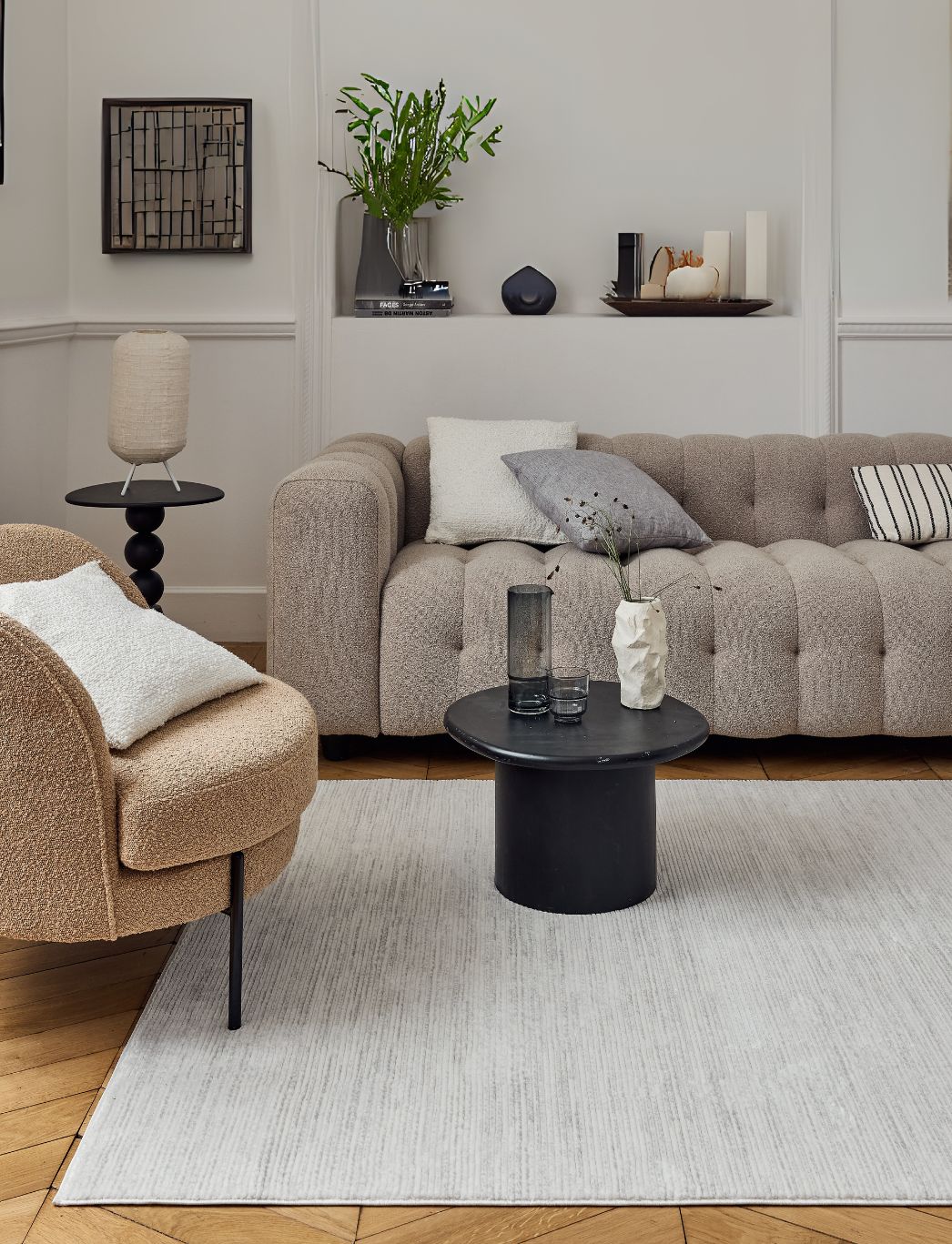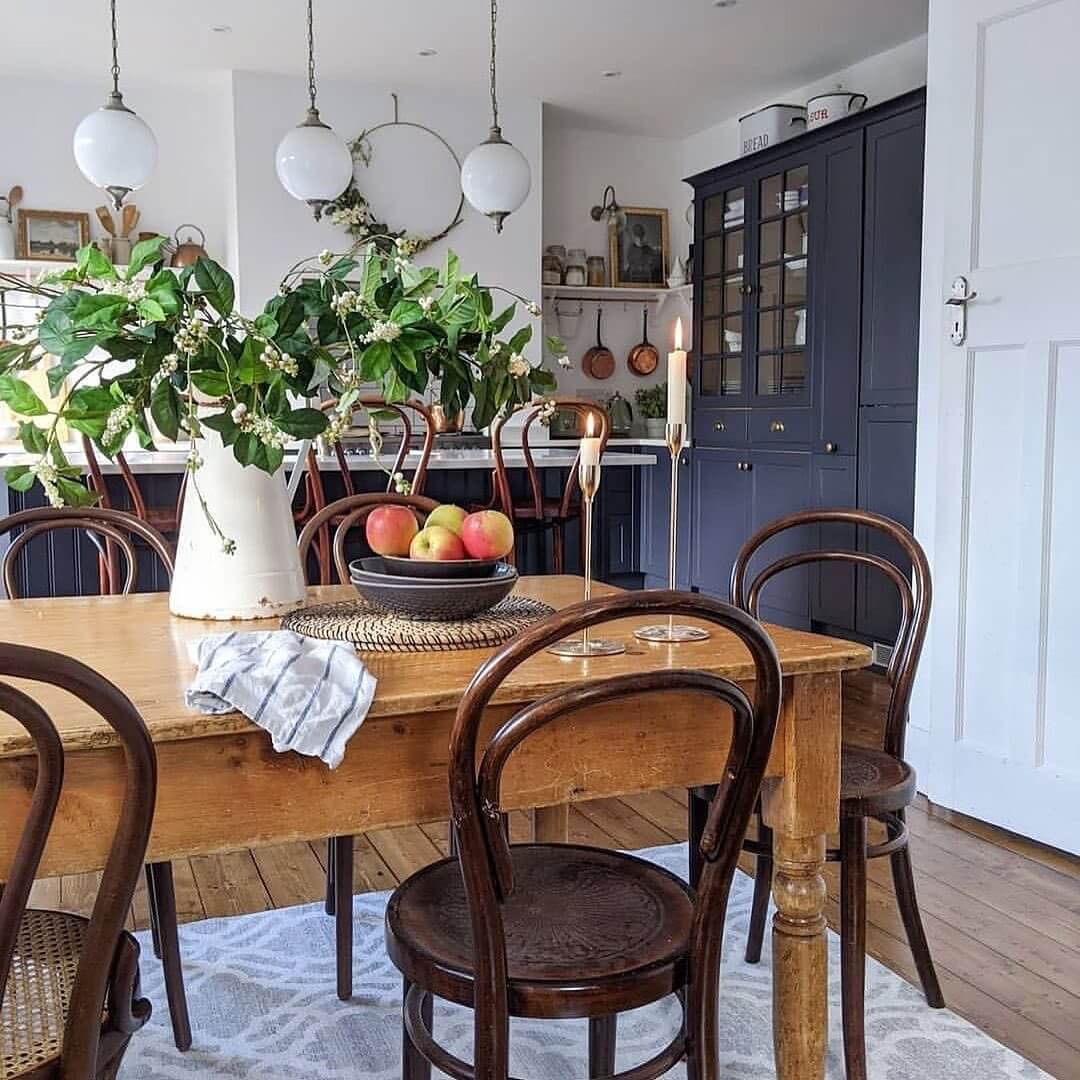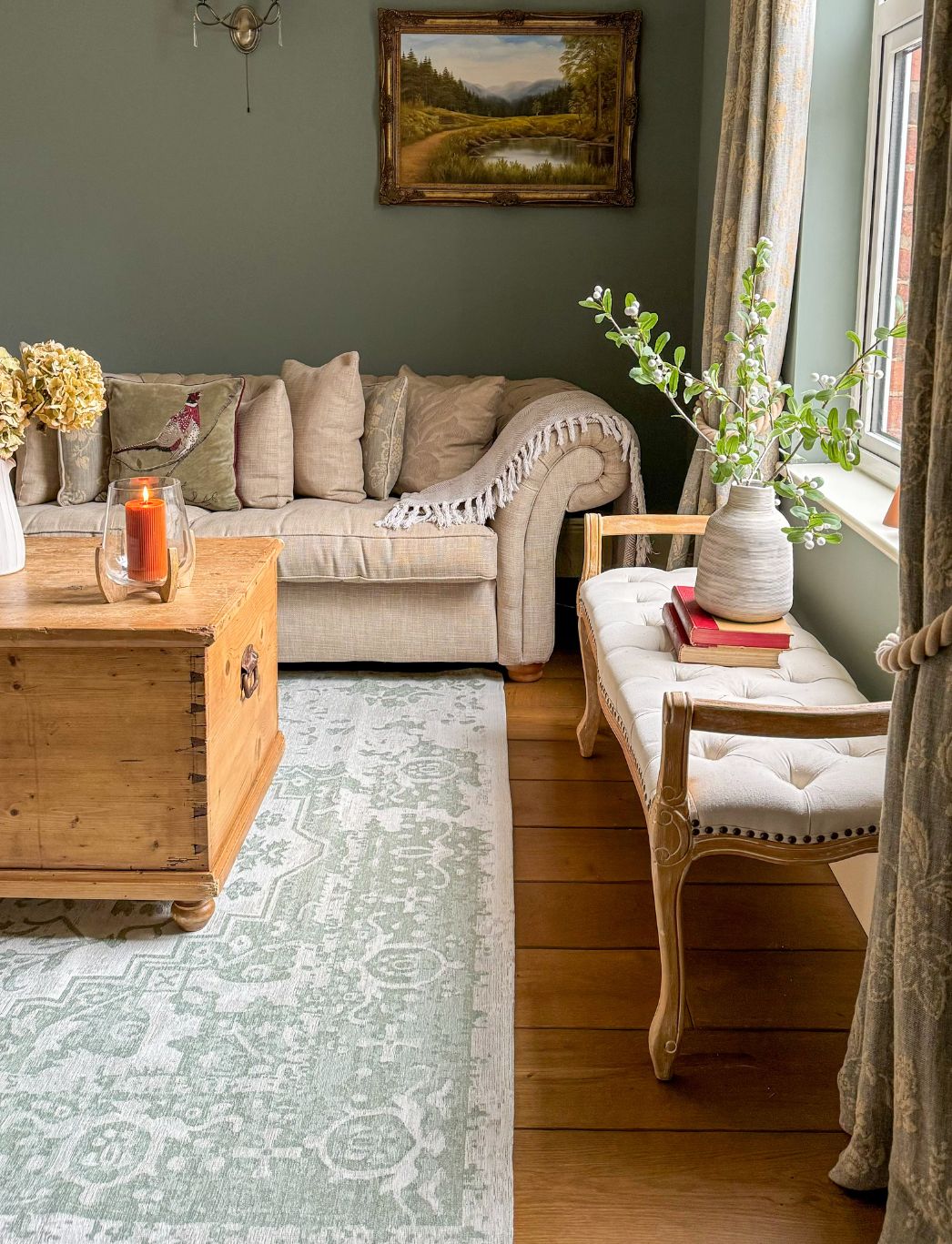Bamboo Care 101 – Choosing and Caring For Bamboo Plants

Bamboo plants are quite versatile, grow quickly and can withstand high temperatures. If they aren’t taken care of properly, you will not see all of these benefits. Before planting these, learn how to choose bamboo, where to grow it and care tips you can use to maintain your crop.
How to Choose the Right Bamboo
Thousands of bamboo species can grow as tall as 100 feet to only a few inches. Use these criteria to narrow your choice.
Types of Bamboo Plants
There are two types of bamboo plants you can choose as per your needs, space, budget and convenience:
Running Bamboo
- It doesn’t require root barriers but requires a lot of maintenance since it spreads fast.
- You don’t need to buy plants since these take up much space.
- Easier to find in garden stores.
- Certain types may be restricted in your area.
Clumping Bamboo
- No root barriers are required.
- It only grows a few inches annually.
- Save space for other plants. Clumping bamboo doesn’t fill up areas that fast.
- Low maintenance.

Check Your Climate
Bamboo is a tropical plant, but some species are hardier than others. It usually thrives in warm and humid conditions, but some species can grow in cold weather, such as Phyllostachys and Fargesia. Most people in temperate climates keep their bamboo healthy in full or partial shade.
Where and When to Plant
You can grow bamboo in almost any condition, even during the winter. You need to exercise patience when the temperature drops, as the plant only sets down roots during that time. The aboveground growth is minimal but speeds up in the spring and summer. During this time, bamboo plants grew new side branches, foliage and shoots.
Plant bamboo at the back of your garden near a fence if possible. It will allow the plant to grow high and become a natural screen against nosy neighbours. You can also grow clumping bamboo shoots in a pot but use a large container for the runner variety to control their growth.

How to Plant Bamboo
Here are three ways you can plant bamboo:
In a Container
The fastest and easiest way to grow bamboo is in a large container. Bury it in the ground, ensuring the top lip is above the surface. This arrangement will allow the bamboo to grow throughout the container rather than spreading beyond it. Do this only if you are planting in a small area.
In a Trench
If you want to create a hedge or a natural screen using bamboo, dig a two to four feet deep trench which runs along the designated area. Make sure it curves at the end in a C shape and line it with root barrier fabric or paving slabs. Leave a few inches over the soil surface and fill the trench, compacting the soil where you wish to plant. Dig another trench one to two feet in front of the first one to the same depth. This bamboo line will act as your maintenance trench.
In the Ground
Dig a hole twice the size of the root mass and add compost to the base before placing the bamboo shoot inside. This way, the root mass will remain level. Fill the hole after adding soil and compost mixture, and add more on the top before watering.
Bamboo Watering and Feeding Tips
- Don’t allow the soil to dry out, or the roots will rot. While bamboo doesn’t need much water to grow, you can also grow it directly in water. If you do that, ensure the roots are soaked and add more water every ten days to replenish the dwindling supply.
- Bamboo requires only moderate to indirect sunlight to grow. Direct or persistent sunlight will burn the leaves, so don’t leave your plant in front of a window. The edges of the leaves will turn brown.
Bamboo plants are quite hardy, but like other plants, they can die if it is not cared for properly. Use this guide to choose the ideal type and make it flourish under your care. Most species grow quite fast, so you won’t have to wait long to see the results of your hard work.

Bamboo Care in Winter: Protecting Your Green Giants
Winter care for bamboo plants is crucial to ensure their survival and health. Mulching is essential to protect the roots from frost damage. Apply a thick layer of organic mulch around the base of the plant. For potted bamboo, consider moving them to a sheltered area or wrapping the pots in bubble wrap for insulation. Reduce watering during this dormant period, but don't let the soil dry out completely. In areas with heavy snowfall, gently brush off snow from the leaves to prevent breakage. For particularly cold regions, consider covering the entire plant with horticultural fleece on the coldest nights.
Bamboo Care Outdoor: Nurturing Nature's Skyscrapers
Outdoor bamboo care requires attention to several key factors. Watering is crucial, especially during the growing season. Ensure the soil remains consistently moist but not waterlogged. Fertilise your bamboo plants in spring with a balanced, slow-release fertiliser to promote healthy growth. Pruning is essential to maintain the desired shape and size; remove any dead, yellowing, or damaged canes. To prevent spreading, consider installing root barriers around your bamboo plants. Monitor for pests such as spider mites or mealybugs, and treat promptly if detected. Remember, different bamboo species have varying needs, so research your specific variety for optimal care.
Lucky Bamboo Care in Water: Cultivating Good Fortune
Lucky bamboo, despite its name, is not true bamboo but thrives in water-based environments. Change the water every 7-10 days to keep it fresh and prevent algae growth. Use filtered or distilled water to avoid chlorine and fluoride, which can damage the plant. Maintain a water level of about 1-3 inches, ensuring the roots are always submerged. Indirect sunlight is ideal for lucky bamboo; avoid direct sun which can scorch the leaves. If using pebbles for support, clean them monthly to prevent bacterial growth. Trim yellowing leaves promptly, and if the water develops an odour, clean the container thoroughly before refilling.

How to Look After Bamboo in Pots: Container Cultivation Tips
Caring for potted bamboo requires specific attention to create a thriving miniature forest. Choose a large, well-draining pot to accommodate the bamboo's extensive root system. Use a rich, loamy soil mixed with compost for optimal nutrition. Water frequently, especially during hot weather, ensuring the soil remains consistently moist. Fertilise monthly during the growing season with a balanced, water-soluble fertiliser. Prune regularly to maintain the desired size and shape, removing any dead or yellowing canes. Repot every 2-3 years or when the plant becomes root-bound. In winter, protect the pots from frost by moving them to a sheltered area or insulating them with bubble wrap.
How to Take Care of Bamboo Plant Indoor: Bringing the Outdoors In
Indoor bamboo plants can thrive with proper care, bringing a touch of nature to your home. Place your bamboo in an area with bright, indirect light; direct sunlight can scorch the leaves. Maintain consistent moisture in the soil, watering when the top inch feels dry. Humidity is crucial for indoor bamboo; mist the leaves regularly or use a pebble tray filled with water. Fertilise monthly during the growing season with a balanced, water-soluble fertiliser diluted to half strength. Dust the leaves regularly to keep them clean and able to photosynthesise effectively. Monitor for pests like spider mites, which thrive in dry indoor conditions. Lastly, ensure good air circulation to prevent fungal issues.
Growing Bamboo in Pots: Contained Green Elegance
Growing bamboo in pots offers flexibility and control over this fast-growing plant. Select a large, sturdy container with ample drainage holes. Use a well-draining potting mix rich in organic matter. Choose clumping bamboo varieties for easier containment in pots. Water regularly, keeping the soil consistently moist but not waterlogged. Fertilise every 4-6 weeks during the growing season with a balanced, slow-release fertiliser. Prune to maintain the desired shape and size, removing any dead or yellowing canes. Repot every 3-5 years or when the plant becomes root-bound. In colder climates, protect potted bamboo from frost by moving it to a sheltered area during winter.
How to Take Care of Bamboo Plant in Water: Hydroponic Harmony
Caring for bamboo plants in water requires attention to detail for optimal growth. Change the water weekly to keep it fresh and prevent algae growth. Use room temperature, chlorine-free water; let tap water sit for 24 hours before use to allow chlorine to dissipate. Maintain a consistent water level, ensuring the roots are always submerged. Clean the container monthly to prevent bacterial buildup. Provide bright, indirect light for healthy growth. If using pebbles for support, clean them regularly. Trim yellowing leaves promptly to maintain plant health. Add liquid fertiliser designed for hydroponic plants every 4-6 weeks during the growing season. Monitor for root rot, and remove any soft or discoloured roots immediately.
Comprehensive Guide to Bamboo Plant Care
How do I take care of my bamboo plant?
To care for your bamboo plant, provide adequate water, indirect sunlight, and well-draining soil. Regular pruning and fertilization will promote healthy growth.
How often should I water bamboo?
Water bamboo once or twice a week, ensuring the soil remains moist but not waterlogged. Adjust frequency based on climate and pot size.
Does bamboo need sunlight?
Yes, bamboo needs sunlight, but prefers indirect light. Avoid harsh, direct sunlight which can scorch leaves.
How do you take care of a bamboo house?
Maintain a bamboo house by regular cleaning, treating with protective oils, and ensuring proper ventilation to prevent moisture buildup and potential decay.
Why do bamboo leaves turn yellow?
Bamboo leaves turn yellow due to overwatering, nutrient deficiency, or excessive direct sunlight. Address these issues promptly to restore plant health.
What should you not do with a bamboo plant?
Avoid overwatering, using chlorinated water, exposing to direct sunlight, or allowing temperatures to drop below freezing for bamboo plants.
How do you keep potted bamboo alive?
Keep potted bamboo alive by providing well-draining soil, adequate water, indirect light, and regular fertilization. Repot when roots become crowded.
Should lucky bamboo be in water or soil?
Lucky bamboo can thrive in both water and soil. Water-grown plants require frequent water changes, while soil-grown need well-draining, rich potting mix.
How many bamboo stalks are lucky?
In Feng Shui, different numbers of stalks represent various types of luck. Two stalks symbolize love, while three represent happiness, wealth, and longevity.
Can I overwater my bamboo plant?
Yes, overwatering is possible and harmful. Signs include yellowing leaves, mushy stems, and root rot. Ensure proper drainage and avoid waterlogged soil.
How to clean lucky bamboo?
Clean lucky bamboo by gently wiping leaves with a damp cloth, trimming yellow leaves, and changing water regularly if grown in water.
What are the best conditions for bamboo?
Optimal conditions for bamboo include partial shade, well-draining soil, consistent moisture, and protection from strong winds.
How often do you water bamboo?
Water bamboo 1-2 times per week, adjusting based on climate, pot size, and soil moisture. Ensure soil is moist but not soggy.
How to grow lucky bamboo?
Grow lucky bamboo in water or well-draining soil, provide indirect light, and maintain temperatures between 65-95°F (18-35°C). Change water weekly if grown in water.
What does overwatered bamboo look like?
Overwatered bamboo exhibits yellowing leaves, drooping stalks, mushy stems, and may develop fungal growth or a foul odor from root rot.
How to make a bamboo plant healthy?
Promote bamboo health by providing proper light, consistent watering, regular fertilization, and pruning dead or yellowing leaves.
Does trimming bamboo make it thicker?
Trimming bamboo encourages bushier growth but doesn't directly increase stalk thickness. New shoots may grow thicker with proper care and nutrition.
What is the best food for bamboo?
The best food for bamboo is a balanced, slow-release fertilizer high in nitrogen. Apply during the growing season following package instructions.
Why is my bamboo turning yellow?
Bamboo turns yellow due to overwatering, underwatering, nutrient deficiency, pest infestation, or excessive direct sunlight. Identify and address the specific cause.
Can you cut off dead bamboo leaves?
Yes, regularly remove dead or yellowing leaves to improve plant appearance and redirect energy to healthy growth. Use clean, sharp scissors for pruning.
How do you maintain a bamboo plant?
Maintaining a bamboo plant involves providing adequate light, typically bright but indirect sunlight. Water the plant regularly, ensuring the soil remains moist but not waterlogged. Trim yellowing leaves and prune to maintain shape. Use a balanced, water-soluble fertilizer monthly during the growing season to promote healthy growth.
Why is the bamboo plant turning yellow?
Bamboo plants turn yellow due to several reasons, including overwatering, underwatering, or nutrient deficiencies. Excessive direct sunlight can also cause yellowing. Check the plant's environment and adjust watering habits. Ensure proper drainage and consider adding a balanced fertilizer to address potential nutrient issues.
How often should I water a bamboo plant?
Water bamboo plants when the top inch of soil feels dry. This usually translates to watering once or twice a week for most indoor bamboo plants. Adjust frequency based on environmental factors like humidity and temperature. Consistency is key – maintain even moisture without allowing the soil to become waterlogged or completely dry.
Where to place a bamboo plant in a house?
Place bamboo plants in areas with bright, indirect light, such as near east or north-facing windows. Avoid direct sunlight, which can scorch leaves. Bamboo thrives in humid environments, making bathrooms or kitchens ideal locations. In feng shui, bamboo is often placed in the wealth or health areas of a home for positive energy.
What does an overwatered lucky bamboo look like?
Overwatered lucky bamboo exhibits yellowing or browning leaves, often starting from the tips. The stems may become soft or mushy at the base, and there might be a foul odor from the water or soil. Roots may appear brown or black instead of a healthy white or red. Act quickly to adjust watering and improve drainage to save the plant.
Will my bamboo turn green again?
Bamboo can regain its green color if the underlying issue is addressed promptly. Ensure proper light, water, and nutrient balance. Trim away yellow parts and focus on maintaining ideal growing conditions. New growth should emerge green. However, if the yellowing is extensive or the stem is affected, recovery may be challenging.
How to tell if bamboo is dying?
Signs of a dying bamboo plant include widespread yellowing or browning of leaves, soft or mushy stems, and a foul odor from the soil or water. Stunted growth, dropping leaves, and blackening of roots are also indicators. If more than a third of the plant shows these symptoms, it may be difficult to revive.
What kills bamboo best?
To kill bamboo, the most effective method is to cut it down to ground level and immediately apply a glyphosate-based herbicide to the cut stems. Repeat this process for any new shoots that emerge. For a non-chemical approach, persistent cutting and root barrier installation can control bamboo growth over time.
What is the downside of bamboo plants?
Downsides of bamboo plants include their invasive nature, especially for outdoor varieties. They can quickly spread and be difficult to control. Indoor bamboo requires consistent care and can be sensitive to water quality and light conditions. Some species are prone to pests like spider mites. Bamboo can also be toxic to pets if ingested.
How do I make my bamboo plant healthy?
To maintain a healthy bamboo plant, provide bright, indirect light and consistent moisture. Use filtered water to avoid chemical buildup. Apply a balanced, water-soluble fertilizer monthly during the growing season. Prune regularly to encourage bushier growth and remove any yellowing leaves promptly. Ensure good air circulation to prevent fungal issues.
What is the best feed for bamboo?
The best feed for bamboo is a balanced, water-soluble fertilizer with equal parts nitrogen, phosphorus, and potassium (e.g., 10-10-10). Apply monthly during the growing season, diluted to half strength. Organic options like compost tea or seaweed extract can also promote healthy growth. Avoid over-fertilizing, which can lead to salt buildup and root damage.
How to water lucky bamboo?
Water lucky bamboo by keeping the roots consistently moist. For plants grown in water, change the water every 1-2 weeks using filtered or distilled water to avoid chlorine and fluoride buildup. Maintain a water level of about 1-3 inches, covering the roots but not the stems. For soil-grown lucky bamboo, water when the top inch of soil feels dry.
How to trim a bamboo plant?
Trim bamboo plants by cutting just above a node (the ring on the stem) using clean, sharp scissors or pruning shears. Remove any yellow or brown leaves entirely. To encourage bushier growth, trim the tops of the stalks. For lucky bamboo, maintain the traditional shape by keeping side shoots shorter than the main stalk.
How do I bring my bamboo plant back to life?
To revive a bamboo plant, first identify and address the underlying issue. Adjust watering habits, ensuring proper drainage. Move the plant to an area with bright, indirect light. Trim away any dead or yellowing parts. If root rot is present, remove affected roots and repot in fresh, well-draining soil. Provide a humidity boost with misting or a pebble tray.
Can you overwater bamboo?
Yes, bamboo can be overwatered, leading to root rot and other issues. Signs of overwatering include yellowing leaves, mushy stems, and stagnant water smell. Ensure proper drainage in pots and allow the top inch of soil to dry between waterings. For lucky bamboo grown in water, maintain a consistent water level without submerging the entire stalk.
What kind of fertilizer for lucky bamboo?
Lucky bamboo benefits from a liquid, balanced fertilizer (10-10-10) diluted to quarter strength. Apply every 2-3 months during the growing season. Alternatively, use specialized aquarium plant fertilizer for water-grown lucky bamboo. Avoid fertilizers high in fluoride or boron, as these can damage the plant. Always err on the side of under-fertilizing to prevent root burn.
Related Blog Posts
Aloe Vera Plant: Care, Types, Growth, and Propagation
How to Take Care Of and Utilize Begonia Plants
The Best Guide to Money Plant Care
A Step-By-Step Tutorial for Growing a Magnificent Magnolia Tree










Leave a comment